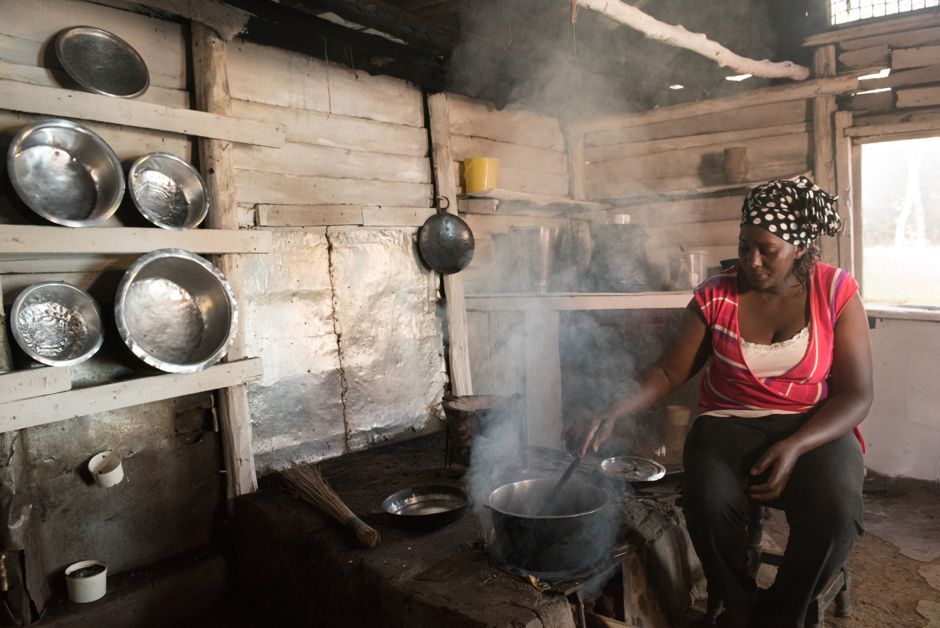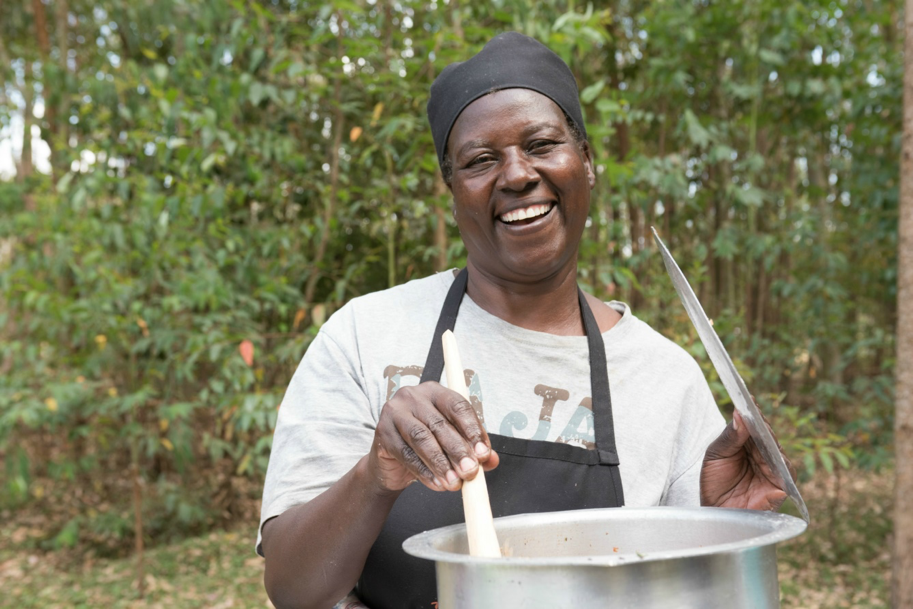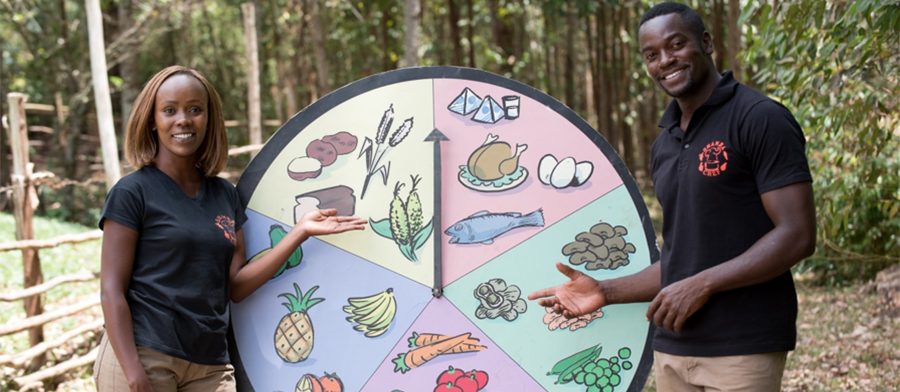A choking cloud of smoke greets us as we enter the room. Cramped, poorly ventilated and rectangular in shape, the room is darkened by scorched walls as black as night. As we familiarise ourselves with our newly-found surrounding, a pungent smell of burning wet firewood dissipates from the left corner of the room, dwindling the little supply of fresh air from the half-open window above the cooking station. Though it is frugally furnished, it is tidily kept, clean and telling of a simplistic lifestyle. This is Doris’ kitchen that we have just stepped into.

Doris, or ‘Mama Britney’, as she is commonly referred to, is a mother of two young children who lives in Luanda, situated south-west of Vihiga County in Kenya, whilst her husband works in the capital city. Her son, shy of his two-year birthday, cradles her leg unsure of the strangers who have just entered their homestead.
When Mama Britney smiles her well-formed and even white teeth brighten up her whole face. But as she describes to us the problems she faces in her kitchen environment, she is suddenly filled with distress. She spends more money on fuel than food, which is not only a financial strain, but affects her family’s nutrition and health. Sniffling, runny noses and irritated eyes are typically experienced by her children caused by the harmful fumes emitted from her traditional three-stone jiko, Swahili for stove. Sadly, this is characteristic of households across Kenya.

She like 15 million other Kenyans, are exposed daily to high levels of household air pollution (HAP) from using inefficient cooking fuels such as firewood and charcoal, and simple cook stoves. According to PS Kenya, illnesses attributable to HAP are the second leading cause of death in the country, leading to over 40 per cent of premature deaths amongst children. Moreover, inefficient stoves and fuels place economic burdens on families, spending up to 30 per cent of their income on purchasing fuels.
At the same time, nutrition is a limiting factor for rural Kenyans, and costs the country millions of dollars in lost earnings and health complications, such as stunting and low brain development. Rural Kenyans eat a diet that is high in starch, low in protein and vitamins, and that does not vary. The result being that 35 per cent of children under five are stunted, millions are micronutrient deficient, not only young children but also adults and in particular lactating mothers, and it’s the poorer families who suffer the most.
With such alarming figures, it is clear that the need for an alternative, cleaner, fuel efficient and healthier option for cooking is growing increasingly paramount in Kenya.
This is where we come into play.
Shamba Chef is the new sister TV program to Shamba Shape Up, which will primarily focus on cleaner and more efficient cook stove adoption, as well as tackling wider issues associated with nutrition. Shot throughout Kenya, the series will delve into real households to explore new ways to cook, making it quicker, safer, cleaner and at half the cost.
Supported by the Global Alliance for Clean Cookstoves, Shamba Chef is produced by The Mediae Company and will air in both English and Swahili on Citizen TV Kenya over the course of 13 episodes.
It will be dedicated to rural and peri-urban women such as Mama Britney, transforming their kitchens, conducting cook-offs between neighbours and featuring popular Kenyan chefs who will highlight cultural food preferences from around the country, and demonstrate how to cook tasty and nutritious meals from locally available food. It will also include nutrition experts promoting the benefits of a well-balanced diet and how to maximise nutritional opportunities for the family by growing your own food.
Viewers at home will be able to subscribe to the show’s mobile information service and call centre, iChef, to get additional content on where to purchase energy saving cookstoves of their own as well as nutrition tips.
The aim of the show is to improve their cooking methods, warm them up to changing their practices around their family’s health and nutrition, and to fuel the uptake of cleaner more efficient cookstoves.
However, it all boils down to the fact that changing food practices is in many ways more difficult than changing agricultural practices. In both, traditional practices may be slow to change in the face of a rapidly changing environment. Dietary incentives and effects are all much less obvious. The needs are often not perceived and established tastes are felt to be inviolable. Daily routines are precious and food choices are permeated by status factors; meat is culturally perceived as a ‘man’s meal’.
But we believe that the proof to affect change is in the pudding! Mediae has a proven track record of delivering media productions that are highly effective at impacting on people’s knowledge, attitudes and practice. For instance, in 2016, 80 per cent of the people who watched Shamba Shape Up learnt something new from it, and 43 per cent of the audience actually adopted a new practice they learnt on the program. Building off this, the program is a potential recipe for success.
So watch Shamba Chef, as we meet families, enter their homes, and find out what happens in Kenyan kitchens. It is sure to be worth its salt!
Shamba Chef airs Sundays and Thursdays at 1:30pm on Citizen TV Kenya. For more information, visit the Shamba Chef website, or follow us on Facebook or Twitter.



